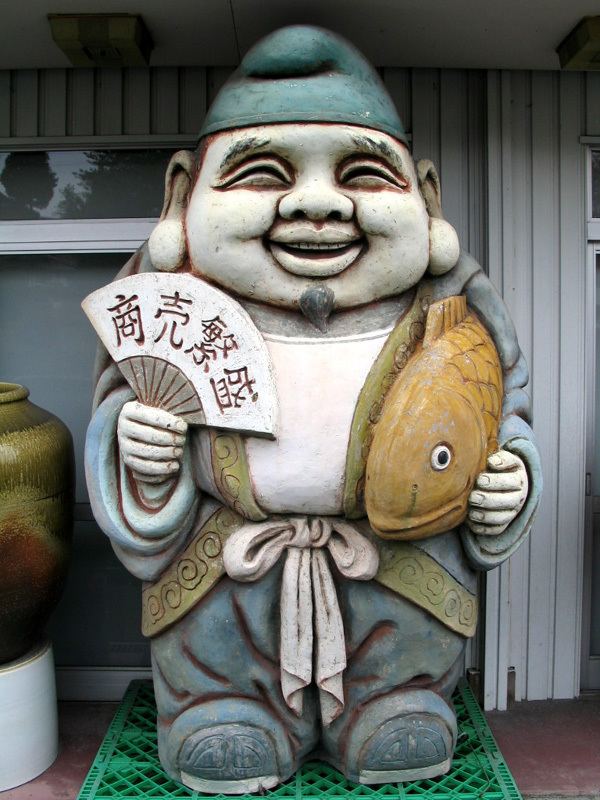Shinto is frequently a theme in Japanese popular culture, including film, manga, anime, and video games. Shinto religion is at the core of Japanese culture and history and as such greatly affects the outcome of pop culture in modern Japan. The references are pervasive and have significant relevance to modern life in Japan amongst the new generations.
This page follows discussion of each genre with a list of works in Japanese or international popular culture that borrow significantly from Shinto myths, deities, and beliefs. It is not an exhaustive list of the many games, movies, manga and other cultural products that mention the religion or the names of its deities.
Shinto itself features in popular culture as folk Shinto or Minkan Shinto.
Anime and manga
Shinto motifs and themes such as kami (gods or spirits) are particularly present in anime and manga.
In Dream Saga, the earth is destroyed and recreated whenever humans have polluted it. This is done when Susanoo, the shinto god of the sea and storms, (the brother to Amaterasu) consumes Amaterasu, the sun goddess. The two main characters, Yuuki and Takaomi, are given key roles in the process.In the manga Urusei Yatsura, a parody of the famous story of Amaterasu hiding in Ama-no-Iwato cave is performed, which ends when the gods decide they enjoy the burlesque spectacle outside the cave so much, they lock Amaterasu inside.Susanoo the Brawler is an episodic comic by Elizabeth Watasin, appearing in Action Girl Comics, in which many members of the Japanese pantheon are incarnated as teenage girls.Some Japanese films feature themes from Shinto religion or characters based on kami. This is especially the case in animated films, such as Hayao Miyazaki's Princess Mononoke or Spirited Away, but can also be seen in live action and tokusatsu (special-effects driven) films.
In the 2003 film Onmyoji II, the story of Amaterasu (played by Kyōko Fukada) is revisited when the main character, based on Abe no Seimei (played by Mansai Nomura), assumes the role of the dancer in bringing the goddess back to earth. Susanoo is also a character in the film, played by Hayato Ichihara.In the Stargate series, Amaterasu is a Goa'uld system lord who comes to Earth after Anubis's demise to the ancient device in Antarctica to form a temporary truce between Earth and the Goa'uld. She comes along with Lord Yu and Camulus.In The Three Treasures Toshirō Mifune portrays Susanoo.In Little Prince and the Eight-Headed Dragon Susanoo wishes to follow his mother, Izanami, to heaven when she dies, but his father, Izanagi, tells him he cannot.Video games may relate to themes or characters from Shinto, as well as Buddhism, Christianity, and other religions. Such games may present a heterodox or alternative take on religion, or even parody traditional practice or belief. In addition to Shinto stories or kami, themes such as the sacredness of nature or the place of magic in everyday life are also visible in such games.
In the 2006 video game Ōkami, Amaterasu is depicted as a white wolf and she is the main protagonist of the game. As in the traditional Shinto, Amaterasu is the goddess of the sun, but in the game she controls many other powers as well by painting things. This depiction of Amaterasu is also a playable character in Marvel vs. Capcom 3: Fate of Two Worlds and Ultimate Marvel vs. Capcom 3.In 2016, four Japanese deities were included as playable characters in the multiplayer online battle arena video game Smite.In the popular video game Destiny, the Susanoo Fusion Rifle made an appearance as a Warlock exclusive weapon with the release of The Taken King expansion. The flavor text for this gun reads "The fearsome Storms of Today become the healing waters of tomorrow". This gun came out with the Stormcaller class, alluding to Susanoo's status as a storm deity.Shinto stories or kami also appear in other works of popular culture, including work set in Japan but produced outside of the country.
The Shinto deities Izanami and Izanagi (the latter incorrectly spelled as "Izaghi") appear in Puccini's opera Madama Butterfly.The Shinto deities Izanami and Izanagi (spelled "Izanaki") appear in Natsuo Kirino's The Goddess Chronicle.In the novel, Giles Goat-Boy, author John Barth makes reference to the people of Japan as the "Amaterasu," who were EATEN by WESCAC (a reference to the atomic bombing of Hiroshima and Nagasaki) during the "Second Campus Riot" (World War II).Izanagi and Izanami appear as minor supporting characters in the Archie Comics series of the Teenage Mutant Ninja Turtles franchise, aiding the Turtles and their allies in battle against a powerful demon whose emergence from a damaged nuclear reactor threatens the safety of all Japan.
